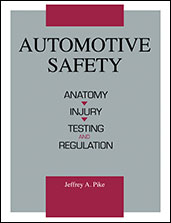Journal Article
A Fuzzy Inference System for Understeer/Oversteer Detection Towards Model-Free Stability Control
2016-04-05
2016-01-1630
In this paper, a soft computing approach to a model-free vehicle stability control (VSC) algorithm is presented. The objective is to create a fuzzy inference system (FIS) that is robust enough to operate in a multitude of vehicle conditions (load, tire wear, alignment), and road conditions while at the same time providing optimal vehicle stability by detecting and minimizing loss of traction. In this approach, an adaptive neuro-fuzzy inference system (ANFIS) is generated using previously collected data to train and optimize the performance of the fuzzy logic VSC algorithm. This paper outlines the FIS detection algorithm and its benefits over a model-based approach. The performance of the FIS-based VSC is evaluated via a co-simulation of MATLAB/Simulink and CarSim model of the vehicle under various road and load conditions. The results showed that the proposed algorithm is capable of accurately indicating unstable vehicle behavior for two different types of vehicles (SUV and Sedan).


